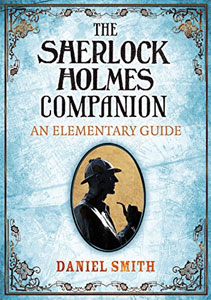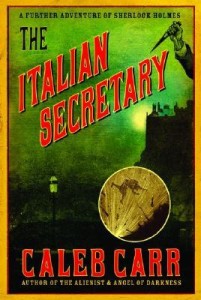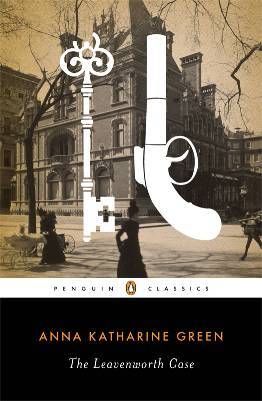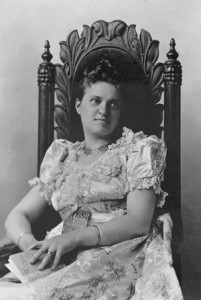As we have already learned in the 17th Street book blog series, one of Caleb Carr’s inspirations while writing the Alienist books were the original Sherlock Holmes novels and short stories. Mr. Carr explained in an interview with Australian newspaper The Age in 2005 that, “Kreizler was invented quite consciously as a character who could solve all the crimes Holmes couldn’t, in which there’s little or no physical evidence and no apparent motive – the product of aberrant criminal psychology.” Beyond Dr. Kreizler, there are references to the original Sherlock Holmes stories within the books as well, such as the inclusion of Filipino pygmy, El Niño, in The Angel of Darkness. Mr. Carr acknowledged in an interview with The Seattle Times in 1997 that El Niño was “a little tip of the hat to Conan Doyle and the pygmy in ‘The Sign of Four.’ A lot of people have told me they consider the pygmy an absurd character. That’s one reason I love this time period. What looks absurd to us now wasn’t absurd then – eccentricity was really appreciated and cultivated.”
In 2005, Mr. Carr took his interest in Sherlock Holmes one step further by accepting a commission from the estate of Sir Arthur Conan Doyle to write a further Holmes tale. His final product, The Italian Secretary, took Holmes from the foggy, gas lit streets of late nineteenth century London to the Royal Palace of Holyroodhouse in Edinburgh, with a mystery that revolved around a double murder that called the great detective’s mind back to the (real life) murder of David Rizzio, private secretary to Mary Queen of Scots. The novel was well-received, with The Guardian describing Mr. Carr’s characterisation as “outstanding,” USA Today complimenting Mr. Carr’s “astute and unerring […] portrayal of Holmes and his techniques,” and Publisher’s Weekly suggesting that the novel would appeal to Holmes fans and scholars due to the “deep knowledge and understanding of Holmesiana” on display in the text.
Following the publication of The Italian Secretary, Mr. Carr was interviewed for Daniel Smith’s 2009 Sherlock Holmes reference text, The Sherlock Holmes Companion: An Elementary Guide, that was updated and reissued in late 2014. Mr. Smith explains in his Introduction to the guide that he chose “individuals whose lives have become entwined with the Holmes legend” as subjects for the “Holmes and Me” interviews that he decided to scatter throughout the text as a means of offering further insight into the “enigma” that is Sherlock Holmes. In the 2014 reissue, Mr. Smith’s interview with Mr. Carr spans three pages of the text and explores questions such as when and how Mr. Carr first became interested in the Sherlock Holmes stories (as a boy of eight years old, it turns out); the particular challenges he faced in writing a new Holmes tale; the revival of Holmes in the twenty-first century and what it says about popular culture; the role Sherlock played in the creation of the Alienist novels; and finally, what Sherlock Holmes—the character—means to him. It’s an interview that is well worth perusing if you are a Caleb Carr reader who also loves Sherlock Holmes, as I am.
The Caleb Carr interview aside, the 2014 reissued guide is a worthy addition to the library of any interested Sherlock Holmes reader. Opening with a social and political chronology of historical events that correspond to the period from Holmes’ first reported case until he went into retirement (i.e., 1879-1903), the majority of this beautifully illustrated 224-page text comprises spoiler-free synopses (each synopsis is one page long) of all four Holmes novels and fifty-six short stories. It also contains brief biographies of Holmes’ creator Sir Arthur Conan Doyle and notable Holmes illustrator Sidney Paget, analyses of the main characters who appear throughout the stories, and a series of essays that look at specific elements of the literary Holmes (e.g., “Holmes as the Detective-Scientist”) as well as his role in popular culture (e.g., “Holmes on Stage, Screen, and Radio”). Finally, scattered throughout the text are the aforementioned “Holmes and Me” interviews with individuals ranging from writers such as Mr. Carr, to actors such as Edward Hardwicke who played Dr. Watson for the acclaimed Granada TV production alongside Jeremy Brett, to the co-creator of the hit TV series Sherlock, Mark Gatiss.
Also scattered throughout the text are a number of fun insets that are sure to appeal to any readers like myself who love learning about the minutiae of the books we love. One such inset contains a list of Sherlock Holmes’ most significant writings. Another contains the now famous illustrated floor plan of 221B Baker Street that was created by Russell Stutler after a close reading of the canonical stories. And yet another (my personal favourite) contains an illustrated guide to the Holmes/Watson firearm collection—immensely helpful for readers such as myself who don’t know their pistols from their revolvers! The only inset that is missing, in my opinion, is a similar illustrated guide to Sherlock’s collection of pipes, although it is worth mentioning that a discussion of the subject is offered in the short yet informative “Holmes and His Pleasures” essay.
While it is likely that this guide won’t cover any terribly new ground if you already own a number of Sherlock texts, if you would like a comprehensive introductory guide to the original Sherlock Holmes canon then this is an excellent choice. Moreover, for Caleb Carr readers, there is, as I’ve already mentioned, the added bonus of an interesting and informative interview spread. Enjoy!





